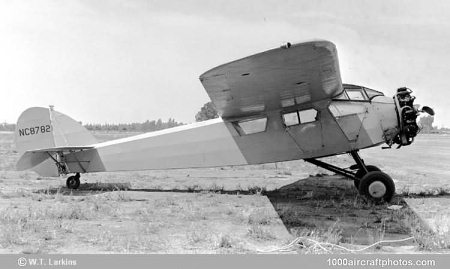01/31/2013. The Cessna Aircraft Company's primary production effort in 1928 involved the A-series. This was a four-seat, full cantilever, high wing monoplane with a gross weight of 2,260 lb (1,025 kg). The fuselage and empennage were made from welded steel tubing and were fabric covered. The wing incorporated a wood structure with fabric covering. The cabin of the A-series was small and passengers were snugly seated. Although crude by today's standards, it was furnished with the appointments common to the automotive industry and was, in its day, considered nicely done.
The Cessna A-series was offered with a choice of five radial engines: Anzani 120 hp, Warner 125 hp, Siemans-Halske 125 hp, Comet 130 hp, and Floco (later renamed Axelson) 150 hp engines. In order to differentiate between these aircraft a model designation system of two letters was developed. The first letter represented the series of airplane and the second letter designated the engine. These models were AA (Anzani), AW (Warner), AS (Siemans-Halske), AC (Comet), and AF (Floco).
The AW was the most popular of the A-series since the Warner engine was the only American-built power plant offered. The combination of cantilever wing, clean lines, and dependable engine made it a high performance airplane for its power class. Earl Rowland, Cessna test pilot, brought national publicity to the little AW when he led all entrants in the Class A Transcontinental Air Derby from New York to Los Angeles in September 1928. His triumph at Los Angeles involved a double victory. The AW also won the 50 mls (80.467 km) closed-course race which followed the New York-Los Angeles Derby as a part of the National Air Races of 1928.
